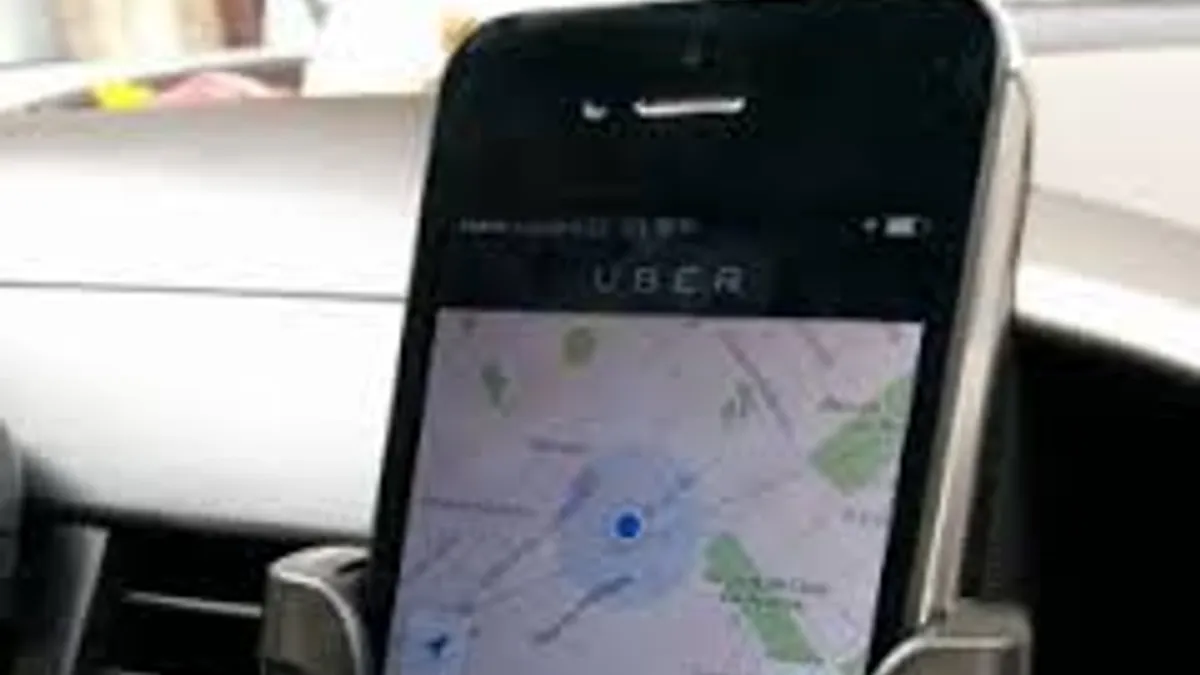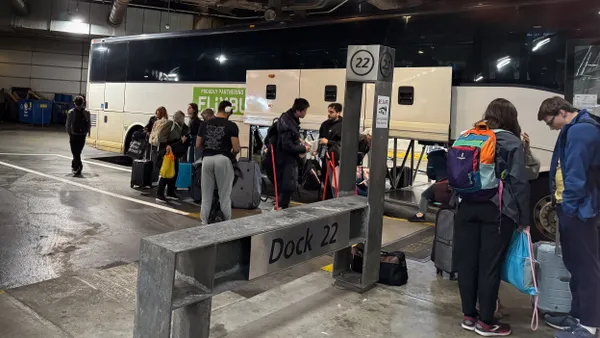Dive Brief:
- People who use ride-hailing services like Uber and Lyft also rely on other sources of transportation like public transit and walking, according to a new report from the School of Geographical Sciences and Urban Planning at Arizona State University. The report found that ride-hailing use was negatively associated with car ownership, but that does not mean riders are abandoning their cars in favor of ride-hailing.
- By analyzing data from the National Household Travel Survey, the authors found that the ride-hailing market doubled between 2009 and 2017. Nearly 10% of all Americans use the services in any given month, although they account for only a total of 0.5% of all trips.
- Despite studies and rhetoric that people would abandon personal cars and rely on Lyft and Uber, the study authors say that does not appear to be true. “The short answer is people are just as attached to cars as ever,” said David King, one of the study's authors, told Government Technology, adding that it was only “marginal” auto users who were ditching their cars.
Dive Insight:
According to the survey — which the authors say is the first large, nationally representative survey to ask about ride-hailing services — the services are used mostly in dense, urban areas, and that users are also more likely to use transit, walk or bike. National studies have been mixed on whether ride-sharing is correlated with more or less transit ridership, but the authors say the survey suggests that it is possible people abandoning personal cars would use both ride-sharing and transit to fill in the gap.
The question of whether people will give up cars remains an open question. The report notes a survey in Austin, TX, which found that 9% of Uber and Lyft users said they purchased a vehicle when the services left the city over new regulations. But the authors say there’s not evidence that entire households are giving up their cars.
It comes amid a deep discussion of whether it is more efficient to own a car or use services; a recent AAA report found that it would be more expensive for urban residents to only use Uber and Lyft, although other studies have found the opposite. The result could have major implications for cities battling congestion on streets.
The findings should prompt cities to keep considering how to integrate ride-hailing services into their transportation mix. Already, some transit agencies have tried to partner with Uber and Lyft to ensure that the services aren’t driving users away from trains and buses. The authors also suggest that cities need to consider factors like curbside pickups (noting that some cities have dedicated pick-up and drop-off zones to reduce congestion) and even potentially declining revenue from parking fees.











